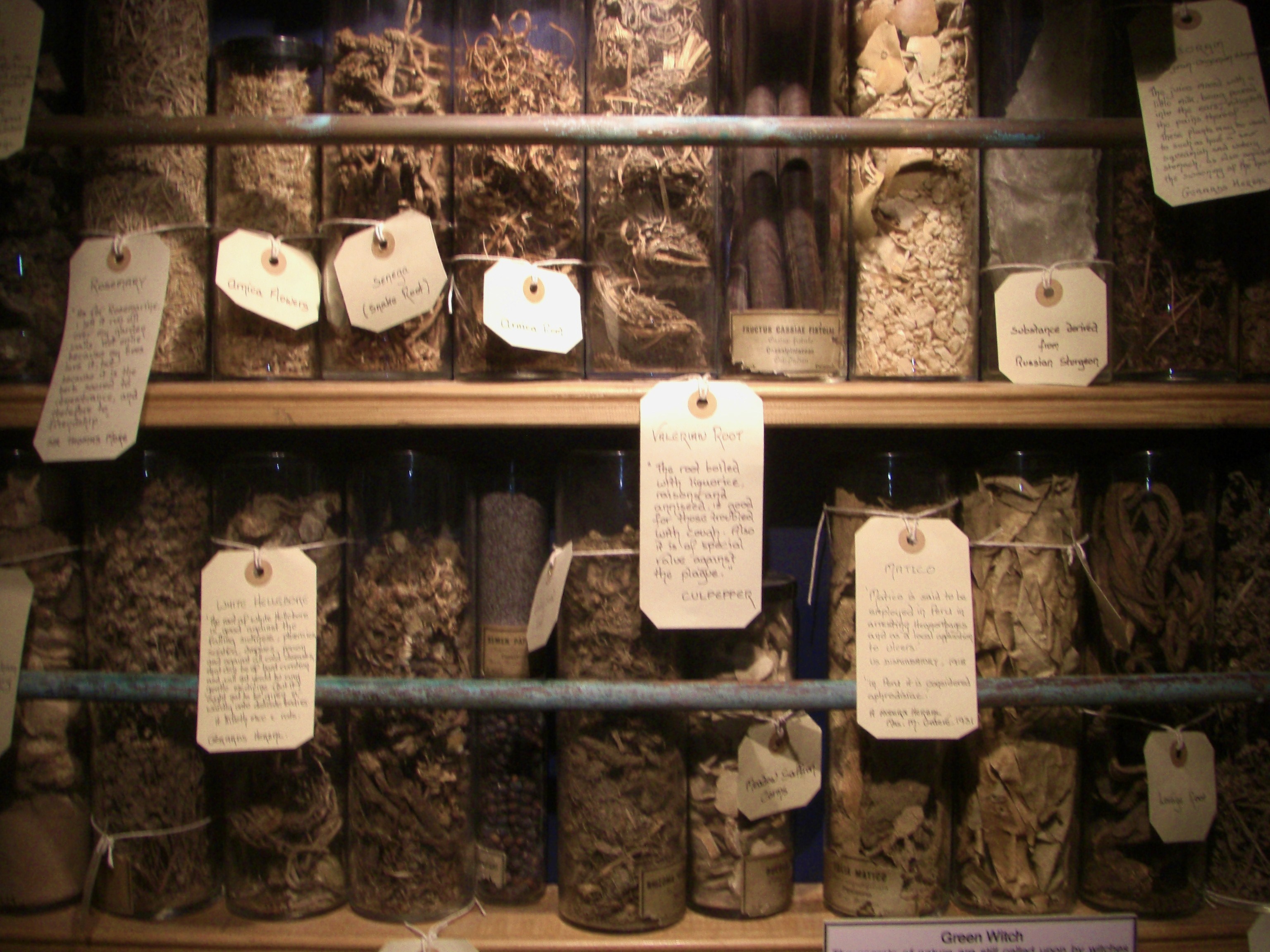Infusion
This method is absolutely the most common in herbology. It is simple, typically quick (in term of effort, not necessarily time), and doesn't require much in the way of equipment. Do you have a glass jar and some water? You can make an herbal infusion. Feel free to do so in your own home with the materials you have on hand.
The infusion may be either hot or cold. In a hot water infusion, the water is boiled, then taken off the heat until its not boiling, and poured over the herbs while still hot. Because boiling water can destroy some of the medicinal properties of herbs, waiting until the boiling stops is essential. Cold water infusions are done when the water is no longer hot at all.
Hot water infusions are faster because they extract the medicinal properties of herbs faster. They are not, however, always the best choice. Some of the more delicate herbs are better done in a cold water infusion, even if you have to set the infusion in the sun for a week before using it. Always consider the particular herb before choosing an infusion method.
Decoction
Though this term can be used to refer to any preparation created by using boiling water, it is typically used in herbology when the extraction made is to be boiled into a concentration. Though you might call the non-concentrated liquid a "tea", this liquid has little medicinal value. It is simply not concentrate enough, so the decoction is almost always boiled down. This method is easy enough to do at home.
Bear in mind that boiling an herb often destroys some of its more subtle medicinal properties, so it's not ideal in most cases. Still, there are decoctions that are highly effective, so keep this extraction method in your back pocket until you need it.
Tincture
Tinctures are basically infusions made with something other than water. Grain alcohols are the most common, but you can also make them with vinegar and wine (which is not grain-based). Like infusions, this one is simple to do at home. Since you don't generally heat the alcohol, tinctures typically take at least a few hours to prepare. Luckily this method also allows you to ignore the tincture for a while, so you're not actually having to tend it all day.
Maceration
There's a lot of confusion surrounding this term, so I'll be very clear. A maceration involves soaking plant material in liquid for so long it becomes a pulp. The liquid can be anything from water to alcohol to vinegar. This method take a long time and is quite irritating (because sometimes it all starts to ferment on you and you have to start all over again). Luckily, macerations aren't all that common in modern herbology.
Expression
This one should be easy enough to remember because to make an expression you "express" the liquid directly from the plant material. Note that you are not adding any of the plant material to your preparation. There should be no pulp in your expression. Think of it like making orange juice. You can squeeze the orange to get a pulp-free expression or you can twist the orange on a juicer to get a pulp-juice mix. With expressions you are after just the juice, not the pulp.
Expressions are not easy to make at home unless you have the right equipment. If you want to make your own expressions, invest in professional-grade equipment to assist you.
Percolation
If you've ever made percolated coffee, then you already know how to make a percolation. This extraction method can be done at home. You're better off buying professional equipment, but you can make due if you have to. To make an herbal percolation you'll need the following materials:
- a large pot
- a screen suspended in the vertical center of your pot
- a domed lid for the pot that does not have a handle
Now you can either make a cold water percolation or a warm water percolation. Fair warning: cold water percolations take a LONG time. Days. Many, many days. If you warm the water gently, the entire process happens faster (though still not fast). Either way, you should see water condense on the lid as it evaporates, roll down to the tip of the dome, and drip onto the herbs. You can speed up the process by putting ice on the inverted lid, but it will still take a while. This is not a method I recommend at home because of the frustrations involved.
Reflux
I'd rather eat glass than make a reflux at home, so do yourself a favor and leave the refluxing to the professionals. Refluxes are basically percolations using something other than water. Alcohol is the most common. Since alcohol tends to ignite on the stove, you absolutely must have professional equipment for this method. And hopefully a professional to show you how to do it. Don't do this at home.
As you can see, some of these methods are easier to pull off at home than others. Most recipes you will encounter will either be tinctures or infusions (or may just use the whole herb instead), so you don't really need complicated equipment. Just space to store your creations.



